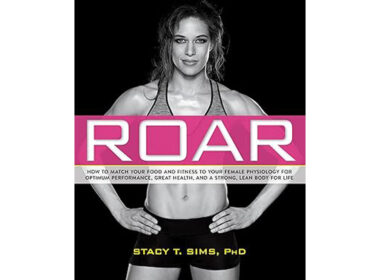At the start of her marriage three years ago, Kate found it difficult to make the switch from navigating dating life to navigating married life. Her wedding night felt so awkward and uncomfortable that she asked her spouse not to focus on her. Unfortunately, this set a precedent for future sexual encounters and she began to feel more and more like a spectator to her own sex life. When she worked up the nerve to ask to try something new, it felt like she was transported back to her wedding night as waves of embarrassment welled up inside her. If only she could just want sex and enjoy it like a normal person, she wouldn’t have this huge stress in her life.
******
Of course Maria wanted to be sexually active with her husband. Or at least, she wanted to want to have sex with her husband. But she didn’t. She figured that in her mid forties maybe it was unrealistic to expect a still-vibrant love life, but she missed the early years with her husband when she felt courted, wooed, desired. It all felt like too much work at this stage of her life. If she could just feel aroused easily, it would be easier to give the “yes” her spouse was hoping for.
******
Stacy closed the door to the kids’ room slowly and let out a breath she hadn’t realized she was holding. Kids asleep? By 7:30? This was the moment she had been dreaming of for months–a whole evening to do anything she wanted. She came downstairs and gave her husband, Ty, a celebratory hug who responded with, “Well, maybe we should go to bed too” *wink*.
Stacy almost staggered under the shock. Sex? You want to ruin my one chance to relax with sex?! The shock clearly showed on her face because Ty added, “Okay, yikes. What did you have planned?”
“A long shower? Reading? Answering my texts from the past week?”
“And is that really better than being together?”
“Um.. yes?” Stacy winced.
“I thought this would be something you wanted, too. Maybe your hormones never sorted out after giving birth?”
******
Clara can’t imagine why anyone would enjoy sex. Early in her sexual relationship with her husband, she felt ignored, left out. Like sex was only something for him. After some hard conversations and some marriage counseling, Clara and her husband are in a much better place, but she worries that she ruined her ability to feel sexual desire or experience climax by having bad experiences with sex early on. Part of her feels so broken.
******
When sex brings despair rather than delight…
What do the (fictional) Kate, Maria, Stacy, and Clara have in common? Each of these women’s sex life isn’t what she would hope for. Each one experiences female sexual dysfunction (FSD). FSD is defined by Mayo Clinic as “persistent, recurrent problems with sexual response, desire, orgasm or pain — that distress you or strain your relationship with your partner.” The key here is that these problems cause distress. There isn’t a medical definition for what any of these factors are supposed to look like (besides pain), so relatively “low” desire or arousal is only cause for concern when it’s negatively impacting a person’s life. If any part of your sex life is a source of stress for you, this can qualify as female sexual dysfunction.
‘Hypoactive sexual desire disorder’ (HSDD) is searched by 9,900 women each month. HSDD is characterized by a lack of desire for sex that lasts at least six months and causes “clinically significant personal distress” [1]. This definition overlaps with that of female sexual dysfunction but is more specific, focusing solely on desire rather than problems with arousal or orgasm. Know too, that this diagnosis refers to a decrease in sexual desire that is not explained by any medical condition, hormonal birth control use that started in adolescence and continued for at least two years, other medications (like antidepressants), pregnancy or recent childbirth, menopause, other sexual issues, your partner’s sexual problems, relationship issues, and stress or fatigue [2].
Any of these factors constitute their own problem with their own specific solutions, rather than “unexplained” decreased desire. Of note, the DSM-V, the professional “Bible” of the American Psychiatric Association, no longer recognizes HSDD as a distinct sexual disorder. Instead, it now folds HSDD and female sexual arousal disorder into “female sexual interest/arousal disorder.”
What are the accepted treatment options for hypoactive sexual desire disorder and female sexual dysfunction?
With FSD, the more general diagnosis, the treatment typically involves attempting to identify a cause of the specific problem and then treating that problem. If relationship issues seem to be the main problem, a doctor might advise relationship counseling. If discomfort or difficulty orgasming is the main problem, a doctor would likely advise lubricant and use of a vibrator to improve clitoral stimulation. Post-menopausal women may be offered hormonal treatments to treat vaginal dryness. Pain due to vaginismus or other pelvic floor issues can be addressed with pelvic floor therapy. Lifestyle changes may be recommended to improve overall health and mood, and medication (including birth control and psychiatric medicines) and medical conditions may be reviewed to find a root cause.
Medications for HSDD
For hypoactive sexual desire disorder, there are a couple of FDA-approved medications: Flibanserin (Addyi) and Bremelanotide (Vyleesi). Flibanserin has been called “pink Viagra” or “female Viagra,” but unlike Viagra it’s not taken as-needed before sex. Viagra increases blood flow to the penis, but Flibanserin works in the brain and has to be taken daily. It’s taken at night to decrease the risk of low blood pressure, sleepiness, nausea, fatigue, dizziness, and fainting. Flibanserin is controversial for all the reasons summarized here; notably, prior to its 2015 approval, the FDA had already rejected the drug twice.
Bremelanotide is a self-administered injection used before sex. The most common side effect is nausea (especially with the first use), and research found that it yielded just one additional sexual experience per month [3].
Are these diagnoses helpful to women?
As with pretty much all issues related to sex, the topic of female sexual dysfunction is controversial. The view I found most intriguing is proposed by sex educator and researcher Dr. Emily Nagoski, in her book Come As You Are.
According to Dr. Nagoski, instead of telling women dissatisfied with their sex lives that they have a dysfunction or a disorder, they need to be told that they are totally normal. Not broken. Not disordered. Just normal and healthy. Dr. Nagoski believes the problems women experience–like Kate, Maria, Stacy, and Clara in the fictional vignettes above–are most likely totally normal reactions to their situations, or due to the fact that sexual response varies widely from person to person. And that’s not a bad thing! (As a caveat: many of the beliefs I hold around sex differ fundamentally from Dr. Nagoski’s, so I can’t wholeheartedly endorse her book, but I found many sections to be helpful and illuminating).
Sex expert describes female sexual arousal in terms of an “accelerator” and “brakes” in the brain
Dr. Nagoski outlines how sexual arousal is achieved when your brain activates arousal’s “accelerators,” and deactivates the “brakes.” The accelerators are the signals in the brain that respond to sexual stimuli, and produce motivation to engage in sexual behavior. The brakes are the signals in the brain that are activated most of the time, to prevent arousal in regular day-to-day situations (like business meetings and grocery shopping). According to Dr. Nagoski, these brakes need to relax to allow for arousal.
Identify the beliefs or thought patterns putting the brakes on sexual desire
At the start of her marriage three years ago, Kate found it difficult to make the switch from navigating dating life to navigating married life. Her wedding night felt so awkward and uncomfortable that she asked her spouse not to focus on her….
In our first scenario, Kate might be described as having FSD, but also as someone with sensitive “brakes” and some emotional baggage around sex. For example, her initial discomfort on her wedding night may have stemmed from a belief that sex is dirty or wrong, or as a result of negative body image. Now, as someone naturally more sensitive to stress when it comes to arousal, she is having a hard time moving forward. Kate may need help overcoming these uncomfortable feelings and would benefit from her partner working to create a context that helps her feel relaxed, safe, and unpressured as they explore together what Kate finds fun and enjoyable.
Make peace with the time and effort needed to achieve arousal
Of course Maria wanted to be sexually active with her husband. Or at least, she wanted to want to have sex with her husband. But she didn’t…
In our second scenario, Maria might be described as having hypoactive sexual desire disorder. She wants to feel desire more easily, and has no medical reason for lacking this desire, and it’s causing her stress. However, it also sounds like her “accelerator” naturally takes more time to engage. She looks back on times when she felt courted and wooed, and remembers that sex was wonderful. Now, life is busy and she wants to be able to have sex with less work. Medication for HSDD is an available treatment, but she can also make peace with the fact that there is nothing wrong with taking more time to warm up and needing lots of attention and affection before desiring sex.
Communicate with your partner about what they can take off your plate so you feel cared for and relaxed
Stacy closed the door to the kids’ room slowly and let out a breath she hadn’t realized she was holding. Kids asleep? By 7:30? This was the moment she had been dreaming of for months–a whole evening to do anything she wanted…
In our third scenario, Stacy may be a person who doesn’t typically have a problem with her brakes or accelerator. However, the context for this romantic evening was dreadful. Instead of sex being a welcome and anticipated event, it is something standing in the way of the first “me time” she’s had in far too long. Odds are, Stacy’s hormones are perfectly fine and she just needs help with creating more opportunities to take care of herself throughout the week, as well as having a scheduled date night where sex can be happily anticipated rather than foiling other plans.
Practice patience as your heart heals and healthy thought patterns hardwire
Clara can’t imagine why anyone would enjoy sex. Early in her sexual relationship with her husband, she felt ignored, left out. Like sex was only something for him…
Finally, Clara is experiencing a normal reaction to terrible sex. Counseling has been sought, hard conversations have been had, and now comes the challenging work of re-training her brain to see sex as something to move towards rather than run away from. Now, she and her partner have some work in front of them to turn the focus towards Clara without adding pressure to perform.
How to start improving your sex life–without a diagnosis
In the end, receiving a diagnosis of hypoactive sexual desire disorder (HSDD), female sexual dysfunction (FSD), or some related term may be beside the point. At the end of her book, Dr. Nagoski gently reminds readers that there is no great secret to “fixing” a difficult sex life. She says you are not broken, and you have everything you need to have a sex life characterized by confidence and joy. That being said, anything you can do to overcome stress and feel safe, whole, and that you belong will help tremendously. Exploring the following options may help:
- Let go of self-critical thoughts
- Practice mindfulness to recognize and let go of negative thoughts about sex
- Practice gratitude and appreciation for your body rather than criticism (this includes your appearance as well as accepting the ease or difficulty with which you experience arousal and climax)
- Exercise and practice self-care
- Rest and seek help when life feels overwhelming
- Look for more opportunities for connection and fun with your spouse
Where you start in addressing a difficult sex life is up to you. But remember that your sexuality is normal and good, and even little steps to improve physical intimacy in your marriage can bear great fruit.
Additional Resources: Charting Toward Intimacy (Podcast)
References:
[1] Pachano Pesantez GS, Clayton AH. Treatment of Hypoactive Sexual Desire Disorder Among Women: General Considerations and Pharmacological Options. Focus (Am Psychiatr Publ). 2021 Jan;19(1):39-45. doi: 10.1176/appi.focus.20200039. Epub 2021 Jan 25. PMID: 34483765; PMCID: PMC8412154. [2] Jean-Jasmin M.L. Lee, Lian Leng Low, Seng Bin Ang, Oral Contraception and Female Sexual Dysfunction in Reproductive Women, Sexual Medicine Reviews, Volume 5, Issue 1, January 2017, Pages 31–44, https://doi.org/10.1016/j.sxmr.2016.06.001 [3] Edinoff AN, Sanders NM, Lewis KB, Apgar TL, Cornett EM, Kaye AM, Kaye AD. Bremelanotide for Treatment of Female Hypoactive Sexual Desire. Neurol Int. 2022 Jan 4;14(1):75-88. doi: 10.3390/neurolint14010006. PMID: 35076581; PMCID: PMC8788464.Additional Reading:
When libido issues are not all in your head







